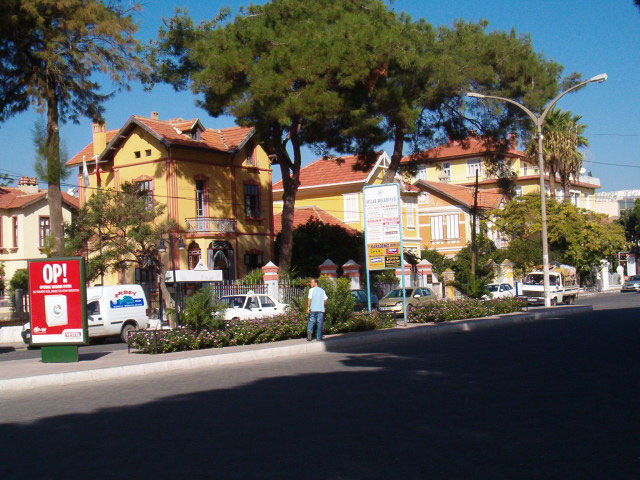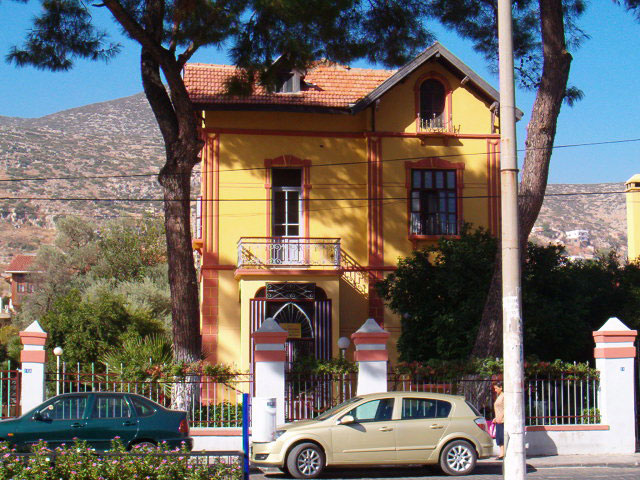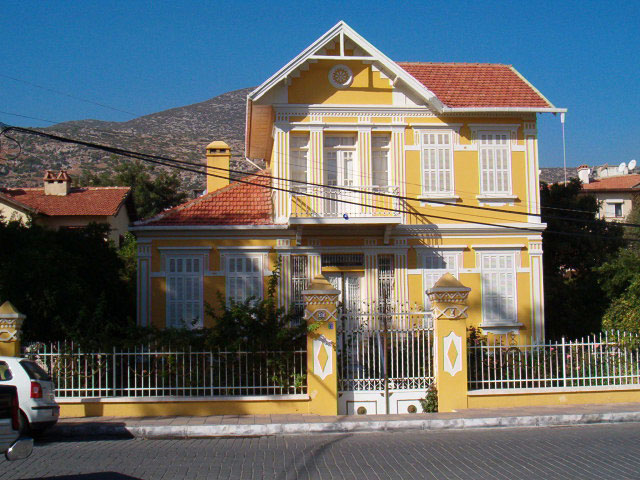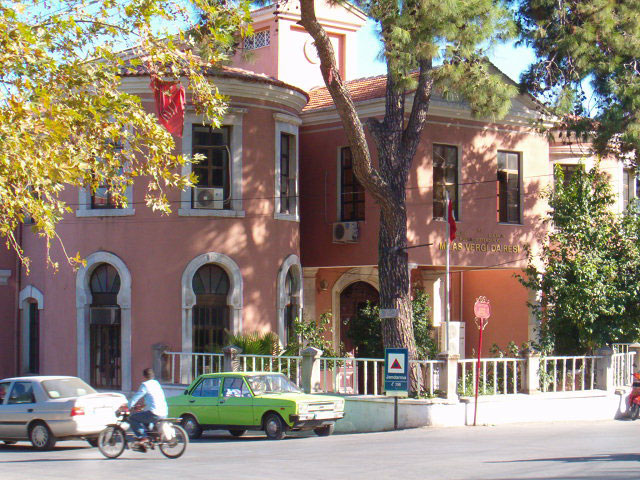 |
Towards the end of the 18th till the middle of the 19th century Levantines lived in Milas. ‘Levantine’ as a word meant a Western settled in the East, be they British, French, German or Italian. These settlers were mostly merchants. The Levantines of Milas were mostly involved in the mining of bauxite, corundum [an industrial abrasive with the same chemistry as sapphires and rubies, commercial mining worldwide long since abandoned as synthetic corundum is a cheaper solution], and marble quarrying and marketing operations. According to the PhD thesis of Dr. Nuri Adıyeke, vice deacon of the history department of the Mersin University, ‘Milas town in the 19th century’, there was a significant Greek and Jewish population resident in the town towards the end of the 19th and early 20th centuries. The Levantines of Milas numbered around 100.
Known by the local population as ‘Macar’ [Hungarian] houses, the Milas Levantine houses carry different elements to the traditional Turkish houses with their wooden ‘cumba’ [covered balcony] forms. It is thought these houses were built by Greek workers who had migrated from their Aegean islands, in a style reminiscent of central Europe. Today of these houses 4 remain. Three of them stand in a row on Atatürk Boulevard across the Tansaş supermarket. One of these houses was donated by Ms Nedime Beler to the municipality, that then restored it and is now being used as girls’ student dormitory. The neighbouring 2 Levantine houses were bought by the businessman Halil Gümüşel, and one has been restored and is now lived in, and the other’s restoration work is still ongoing.
The most magnificient of the Levantine houses was used for a long time as the law courts, and with the movement of the law chambers from here, left in an abandoned state for a while, later restored to become the Milas tax office. This building is on Inönü street, next to the tomb of Abdülaziz Ağa.
These Levantine houses are amongst Milas’s important cultural symbols, carrying the traces of the town’s past, and attracting the interest of local and foreign tourists.
The mayor of Milas, Hulusi Doğan states, the restoration of the Levantine houses is an important step in the recognition of their cultural importance, and added ‘today there is a welter of traditional Turkish houses of Milas many of which are nearing to point of ruin, and these like the Levantine houses should be valued and rescued from oblivion. I call on all citizens of Milas, whether local or now far away, to embrace their cultural heritage’.
(e-mail: nevzatcaglartufekci[at]mynet.com)
Notes: The records of these Levantine settlers seems to be lost to history, however from the obituary of Albert J. Whittall - 1879-1957 (Candlesticks VII, no:9), it is revealed that he mastered Turkish while outside Izmir in Milas, thus at least we know this person was one of the local residents for a time at least.
Mr Tüfekçi is interested in the general social history of Milas, and over the past 10 years he has done an impressive investigation to trace the former Jewish community of the town that left around 1949, and he has shown me some of the letters received that paint a vivid picture of their lives before emigration, the sadness of leaving (such as deciding that they didn’t belong, on being told as a non-Muslim, he wouldn’t be allowed to fly a fighter aircraft) and their chart in the development of the Israeli nation (son and father meeting on the battlefield in the chaos of the 6 day war). Some of these descendants have been welcome as guests back to Milas, visiting family graves and old homes, in the 1990s.
Milas is a market town about 200 km due South-East of Izmir, set within a fertile valley, with a history stretching back to classical times, with ruins dotted in and around the town.
Recently (April 2005) Mr Tüfekçi has published a book on the social history of Milas, entitled, ‘Milas Kentimiz; Sevdamız ve Hüznümüz Bizim’ [Our Milas; our love and our melancholy] where a brief analysis of the Levantine houses is conducted.
 |
 |
 |
 |